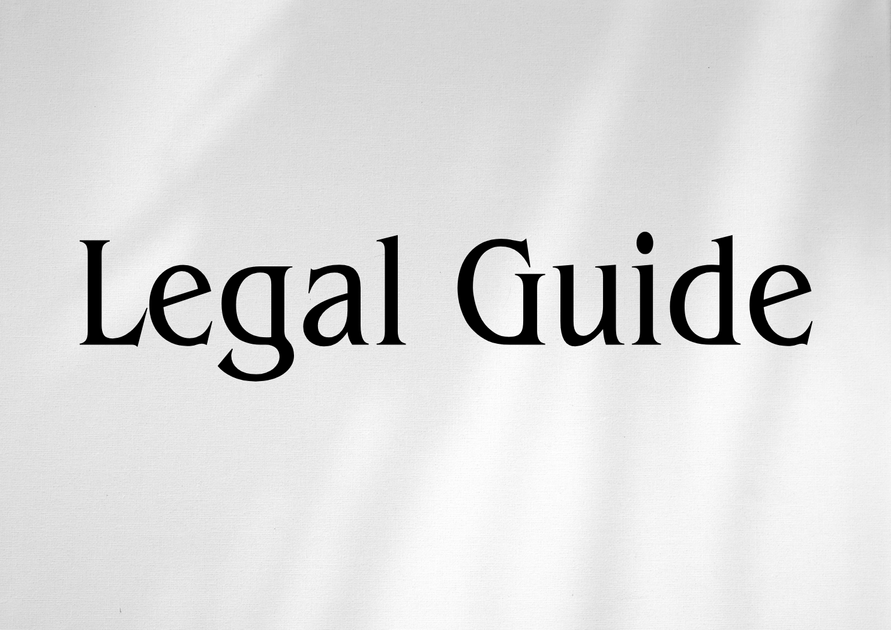Introduction: The Strategic Importance of Saudi Aviation Law Reforms for UAE Stakeholders
The aviation sector across the Gulf Cooperation Council (GCC) is in the midst of rapid evolution, driven by unprecedented regulatory reforms. Nowhere is this more pronounced than in the Kingdom of Saudi Arabia, where sweeping overhauls in aviation law through 2024 and 2025 are reshaping the commercial and legal landscape for local and international players alike. For UAE-based businesses, executives, and legal professionals, these changes present new opportunities—and new compliance demands. Understanding the nuances of Saudi’s updated aviation regulatory framework is now essential for informed cross-border investment, operational planning, and strategic risk mitigation.
This expert advisory provides a comprehensive analysis of the recent reforms to Saudi aviation law, outlining the main legislative instruments, practical implications for UAE entities, and actionable compliance strategies. Drawing on insights from official UAE legal authorities, this article contextualizes the Saudi legal updates within the broader GCC aviation ecosystem and examines the regulatory touchpoints that intersect with UAE Law, Federal Decrees, and best compliance practices for 2025 and beyond.
Table of Contents
- Overview of Recent Saudi Aviation Law Reforms
- Legislative Framework and Key Legal Instruments
- Core Provisions: What Has Changed?
- Practical Insights for UAE Corporates and Practitioners
- Comparative Analysis: Old vs. New Law
- Impact and Risk Assessment
- Compliance Strategies and Best Practices for UAE Entities
- Case Studies and Hypothetical Scenarios
- Conclusion and Forward-Looking Perspectives
Overview of Recent Saudi Aviation Law Reforms
In 2024–2025, the General Authority of Civil Aviation (GACA) of Saudi Arabia has commenced the largest overhaul of its aviation legal regime in decades. These reforms are not only aimed at supporting the Kingdom’s Vision 2030 objectives for tourism, logistics, and economic diversification, but they also align Saudi aviation standards with global benchmarks established by the International Civil Aviation Organization (ICAO).
The changes include new licensing requirements, broader operational mandates, enhanced consumer protections, foreign investment facilitation, and stricter environmental and safety standards. For UAE businesses with cross-border airline cooperation, code sharing arrangements, logistics hubs, or MRO (maintenance, repair, and overhaul) activities in Saudi Arabia, proactive engagement with these reforms is now a commercial imperative.
Legislative Framework and Key Legal Instruments
Primary Laws and Regulations
The two central legislative updates in Saudi aviation law are:
- Civil Aviation Law (Royal Decree No. M/44 of 2024): This law governs all aspects of civil aviation, including licensing, safety, environmental compliance, air carrier rights, consumer protection, and dispute resolution.
- GACA Executive Regulations (2025 Revision): Implementing detailed rules across operations, air safety, airport management, ground handling, drone operations, and aviation finance.
These are supported by numerous circulars and resolutions issued by GACA, paralleling the regulatory style of UAE Cabinet Resolutions and Ministerial Guidelines. UAE-based entities must also consider the interplay with:
- UAE Federal Law No. 20 of 1991 (Civil Aviation): The domestic legal anchor for cross-border civil aviation matters, recently enhanced by Federal Decree-Law updates covering international aviation cooperation and passenger rights.
- Bilateral Air Services Agreements: Treaties between the UAE and Saudi Arabia that address market access, reciprocal operating rights, and safety oversight.
The Role of International Standards
Saudi aviation reforms closely track ICAO standards and recommended practices (SARPs), just as the UAE’s Federal Law framework does. This harmonization ensures smoother inter-GCC air operations but also imposes higher compliance standards on UAE operators engaging with Saudi markets.
Core Provisions: What Has Changed?
1. Expanded Licensing and Market Entry Requirements
The 2024–2025 reforms introduce more granular licensing categories—commercial airline, cargo, drone operator, air charter, and MRO, each with stringent eligibility and disclosure mandates. Foreign direct investment caps have been relaxed for aviation companies in certain sectors, subject to reciprocal treatment clauses and national security vetting.
2. Heightened Safety and Environmental Compliance
Mandatory adoption of Safety Management Systems (SMS) and Environmental Management Systems (EMS) is now codified, requiring continuous demonstration of risk control, emissions management, and safety audits. UAE operators must now show evidence of equivalent systems to qualify for Saudi operational licenses.
3. Robust Consumer Protections and Passenger Rights
Comprehensive new rules address flight delays, cancellations, passenger compensation, and transparent fare disclosures. These echo recent consumer protection reforms in UAE’s aviation sector, notably the “Passengers’ Rights Regulation” under UAE Cabinet Resolution No. 28 of 2019.
4. Digital Transformation and Data Governance
Saudi aviation law now requires digital recordkeeping, mandatory reporting of critical events, and regulated use of passenger data. These laws carry extraterritorial risks for UAE airlines flying to Saudi Arabia—requiring review of data transfer agreements, cybersecurity protocols, and supplier diligence.
5. Dispute Resolution and Penalties
The new framework offers expedited dispute resolution mechanisms—administrative hearings, arbitration, and GACA mediation panels—alongside a regime of higher financial penalties for breaches. Repeat violations or willful misconduct trigger progressively steeper fines and may result in license suspension or blacklisting. For UAE entities, understanding the range of sanctions is critical for risk assessment.
| Provision | Old Law (Pre-2024) | New Law (2024–2025) |
|---|---|---|
| Licensing Categories | Generalized permits | Specific licensing for each aviation activity |
| Safety Management | Recommended, not mandatory | Mandatory SMS audits and reporting |
| Environmental Standards | Limited requirements | EMS required; emissions caps |
| Passenger Rights | Basic assurance | Comprehensive compensation, disclosure rules |
| Penalty Structure | Standard fines, limited escalation | Progressive, high-value penalties and blacklisting |
Table 1: Key Differences—Saudi Aviation Law (Old vs. New)
Practical Insights for UAE Corporates and Practitioners
Proactive Compliance for Cross-Border Activities
UAE airline operators and logistics companies serving Saudi routes must now align internal controls and compliance frameworks to meet the new licensing, safety, and consumer standards. Conducting a detailed legal gap analysis—benchmarking UAE internal policies against the latest Saudi requirements—should become standard practice. Key steps include:
- Updating operational manuals to reflect Saudi SMS and EMS mandates
- Integrating Saudi-mandated digital reporting processes with UAE data governance practices
- Training HR and crew on new passenger rights and compensation protocols
- Reviewing insurance coverage and risk allocation clauses in contracts for Saudi operations
Legal Due Diligence and Contract Updates
Legal teams should conduct a comprehensive review of cross-jurisdictional contracts, focusing on areas such as force majeure, dispute resolution, and indemnity provisions. Ensuring that contracts specify the prevailing law, jurisdiction, and updated compliance references is essential—particularly given the extraterritorial reach of Saudi aviation regulators.
Human Resources and Workforce Mobility Considerations
HR managers in UAE aviation companies with Saudi-based staff must reassess employee travel, training certifications, and health and safety compliance. Coordination with UAE’s Ministry of Human Resources and Emiratisation ensures that secondment, immigration, and occupational safety protocols are harmonized, reducing legal friction.
Comparative Analysis: Old vs. New Law
| Aspect | Previous Saudi Aviation Law | 2024–2025 Saudi Aviation Law | UAE Approach (Reference) |
|---|---|---|---|
| Licensing | Limited specificity; slower timelines | Faster, categorized by activity | Federal Law No. 20 (1991), improved by 2023 Decree |
| Foreign Ownership | Restrictive (max 49% FDI) | Liberalized (subject to GACA approval) | Flexible FDI regime; Cabinet Resolution No. 16 (2020) |
| Emissions / Environment | Not directly regulated | EMS required, reporting mandated | MoCCAE guidelines for UAE carriers |
| Passenger Protection | Limited remedies for delay/cancellation | Mandatory compensation, transparency | Passengers’ Rights Regulation (Cabinet Resolution No. 28/2019) |
| Digital Compliance | Manual records acceptable | Digital records, mandatory reporting | UAE Civil Aviation Authority, Digital Services Protocols |
Table 2: Comparative Chart—Saudi vs UAE Aviation Regulatory Framework
Consider adding a visual compliance flowchart here to illustrate cross-border regulatory intersections between UAE and Saudi aviation requirements.
Impact and Risk Assessment
1. Market Access and Licensing Delays
While reforms simplify market access for strategic investors, the transitional period may see scrutiny intensify during licensing reviews and renewal processes. UAE businesses must anticipate longer timelines and potentially higher initial compliance costs.
2. Regulatory Risk of Non-Compliance
Breaches of Saudi aviation law now carry severe administrative and criminal penalties. For example, data mishandling or repeated passenger rights violations may trigger fines in excess of SAR 1 million and loss of operating privileges. Cross-notification mechanisms with Emirates’ General Civil Aviation Authority mean that UAE-based operators may face reciprocal sanctions or reputational harm.
3. Contractual and Operational Ambiguity
Unclear allocation of compliance responsibilities between partners may lead to disputes, insurance exclusions, and business interruption. UAE firms should invest in internal training, contract reviews, and ongoing monitoring of legal developments via resources such as the Federal Legal Gazette and GACA’s official portal.
| Risk | Potential Consequence | Recommended Mitigation |
|---|---|---|
| Licensing Non-Compliance | License suspension, fines | Pre-audit, legal review before application |
| Environmental Breach | Penalty, reputation loss | Implement EMS, annual review |
| Consumer Rights Violation | Fines, litigation, blacklisting | Update customer service training, protocols |
| Data Mishandling | Cross-border legal exposure | Cybersecurity audit, data mapping |
Table 3: Risk Assessment Matrix—Recommended Mitigation Strategies
Compliance Strategies and Best Practices for UAE Entities
1. Establish a Regulatory Watch Function
Create a cross-border legal and compliance team to monitor ongoing updates from GACA, the UAE Ministry of Justice, and international aviation organizations. Subscribe to official gazettes, participate in industry consultations, and proactively engage regulators to clarify ambiguous provisions.
2. Remediate Gaps Through Training and Automation
Provide regular targeted training for compliance, operations, HR, and legal staff using scenario-based modules and translated resources to reflect Saudi law nuances. Invest in aviation compliance software to ensure real-time tracking of licensing renewals, regulatory filings, and incident reporting deadlines.
3. Legal Harmonization and Contractual Alignment
Align cross-jurisdictional contracts to reference the prevailing choice of law, compliant dispute resolution forums, and clear allocation of liability for regulatory breaches. Work with UAE-qualified legal counsel to draft indemnities and insurance endorsements that respond specifically to Saudi regulatory risks.
Consider inserting a compliance checklist visual summarizing these action points for UAE aviation stakeholders.
Case Studies and Hypothetical Scenarios
Case Study 1: UAE Airline Expanding Saudi Operations
Scenario: A UAE-based carrier plans to launch new direct flights to multiple Saudi cities. The airline’s legal team discovers it must overhaul its internal SMS, update crew training, and digitize all passenger manifests to meet GACA’s new 2025 regulations. The company undertakes a six-month compliance review, negotiates updated service agreements, and works with both the UAE Civil Aviation Authority and GACA to clarify obligations under bilateral agreements—successfully securing operating licenses without delay.
Case Study 2: Data Compliance Challenge
Scenario: A UAE logistics firm operating a cargo hub in Riyadh faces a data breach owing to insufficient encryption of Emirates-Saudi cargo manifests. Saudi authorities impose a substantial fine, and UAE authorities initiate a parallel review. The firm’s prompt implementation of integrated cybersecurity protocols and engagement with both regulators enables a reduction in sanctions and restoration of operational privilege.
Hypothetical Example: Code Share Risk Management
A global airline, partnered with a UAE carrier under a codeshare agreement, experiences a passenger compensation claim for canceled flights in Saudi Arabia. Saudi law mandates immediate reimbursement beyond what was customary under UAE law. Robust contract drafting and pre-agreed compliance protocols between the partners facilitate swift resolution and cost containment.
Conclusion and Forward-Looking Perspectives
The 2024–2025 reform of Saudi aviation law sets a new regional standard for transparency, consumer protection, operational oversight, and environmental stewardship. For UAE-based businesses, the imperative is clear: legal compliance is not a one-off event but an ongoing process requiring vigilance, cross-jurisdictional coordination, and proactive engagement with both Saudi and UAE authorities.
Key takeaways for UAE legal practitioners and business leaders include:
- Regular monitoring of legal updates through official portals (UAE Ministry of Justice, Federal Legal Gazette, GACA)
- Early and comprehensive legal gap analysis and contract reviews
- Investment in compliance training and automation tools
- Clear allocation of cross-border operational and legal responsibilities
- Open dialogue with aviation regulators to pre-empt and resolve regulatory issues
Embracing a culture of compliance positions UAE entities not only to avoid penalties but also to leverage new business opportunities presented by Saudi Arabia’s ambitious aviation transformation.
If your organization is navigating the Saudi aviation reforms and seeking expert legal guidance, our team is equipped to provide tailored, actionable advice for every phase of your Gulf operations.




